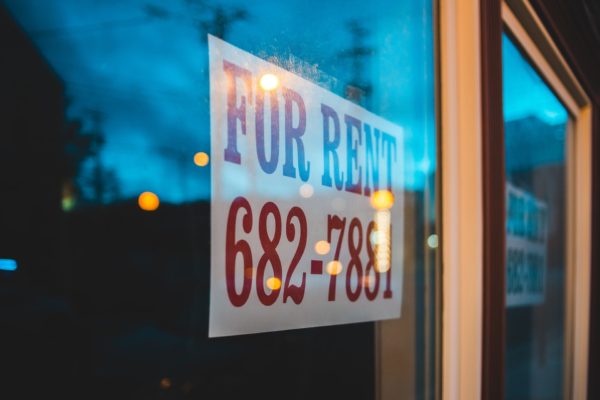Finurah will be bringing you a series of articles discussing the difficult choices associated with purchasing a home. Homeownership is one of the main ways to build generational wealth and to help close the racial wealth gap. But it takes more than a mortgage to buy a home, and Finurah will help you prepare for future homeownership.
Seven years ago, while visiting Ohio, Hogarth Louis discovered a great opportunity: investing in rental property.
For Louis, a New York City resident, there were many reasons that Toledo, Ohio, was the right place to purchase a rental property.
“I knew I couldn’t afford a property in New York, but it was clear that I could easily afford a house in Ohio,” he told Finurah. “I chose Toledo because the cost of homes and taxes were low.
Today, Louis owns a single-family home in Toledo, Ohio, and has plans to purchase additional rental properties.

Investing in rental property is one way to build generational wealth for Black Americans. In general, real estate appreciates over time allowing landlords to build equity in their property. This equity can be used to continuously diversity an investor’s portfolio or, for the more conservative investor, build over time, says Louis. In addition, the tax benefits associated with rental investing, such as deductions on loan interest, contractors and other professional services, insurance premiums, maintenance and repairs, renovations, and even travel are also noted advantages.
Blacks interested in investing rental properties can take these five steps.
1. Research Up-and-Coming Areas
When investing in real estate for the purpose of renting, there needs to be long-term potential, Bob Scott, founder of Sell Land, told Finurah.
Properties in established locations will already be expensive. However, if you invest in an up-and-coming area, you will have future potential. “Look at its potential,” Scott said. Properties in established locations are already expensive so investing in the next big thing will more likely bring you success. Of course, it is always a gamble, but through in-depth research, you can identify the areas wherein there is a predicted boom in the market.”
Research new commercial properties being made in areas. If there is a trend of new construction planned, then most likely this area is being readied for a boom.
Yet, even when looking for the next big boom location, make sure that there is adequate rental or buyer demand in the area, advises Khari Washington of 1st United Realty & Mortgage, Inc.
Louis chose Toledo because more than 50 percent of the population rents — and the cost of homes was lower than in other areas.
2. Understand the Costs Associated With Rental Property Ownership
It’s not uncommon for new investors to focus on the cost of the mortgage. However, there are other expenses to consider when purchasing a rental property. There’s the cost of repairs and maintenance, paying a property management company as well as taxes. In addition, you will have to consider the potential that a tenant will not be able to pay their rent. If a landlord is not careful with managing their income and expenses, it can lead to a cash flow problem.
The average annual operating and capital expenses on properties was $830, according to the National Association of Realtors. Potential rental investors must include operating and capital expenditure costs when making a decision to purchase a property.
“Often new investors just don’t know their expected rent, expected repairs and expected vacancies numbers well and end up with a much lower return on investment than they could get investing the cash elsewhere,” Bill Samuel, real estate investor and founder of Blue Ladder Development, told Finurah.
Calculate the cost of the mortgage, maintenance and repairs for the property. You should also have a savings built up in the event that a tenant is not paying rent or you need to begin the eviction process.
3. Know Local Laws Related to Landlord/Tenant Issues
One of the caveats of owning rental property is the income that an investor will generate over time. However, what happens when a tenant will not pay their rent? What laws are in place to protect not only tenants but also landlords?
With the exception of federal laws, most housing laws are mandated by the state and then a specific municipality. While some states such as New York and New Jersey have very stringent laws that protect tenants, others are more favorable to landlords.
One of the reasons Louis chose to purchase his rental property in Ohio is because it is a landlord-friendly state. This means that laws related to tenancy are in the favor of landlords, making it easier to evict tenants for nonpayment or lease violations. Other states that are considered landlord friendly include Texas, Indiana, Georgia, Alabama, Colorado, Arizona, Florida, Illinois, Pennsylvania and Kentucky.
4. Look for Properties Built After 1978
Older homes might be cheaper to purchase an investment property, but they also come with a ton of challenges.
Structural damage, lead paint, and other repairs will be pricey. Therefore, it is best to avoid until an investor has more experience working with contractors. Remodeling an older home is expensive because you can only use RRP-certified contractors, who know how to avoid lead exposure. Under the EPA regulation “Lead Renovation, Repair and Painting Rule” (RRP), firms performing renovation, repair, and painting projects that disturb lead-based paint in homes, child care facilities and pre-schools built before 1978 must be certified by EPA (or an EPA-authorized state), and use certified renovators who RRP-certified.
5. Watch Out For Red Flags
When purchasing a rental property, you will also need to pay attention to warning signs. If a seller only wants to accept cash — no financing as an option — this could be a sign that something is wrong with the property.
Another red flag could be if a seller does not want the property inspected or appraised and is offering a low cash purchase option. Remember that an inspection will reveal problems in the property’s structure if mold or termites are present. And an appraisal documents a property’s value.




